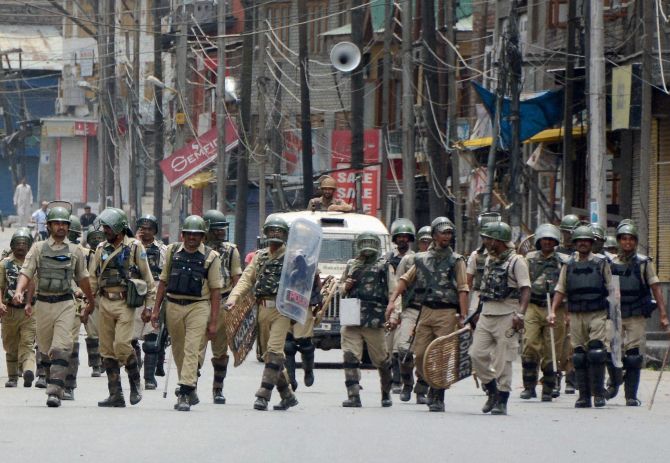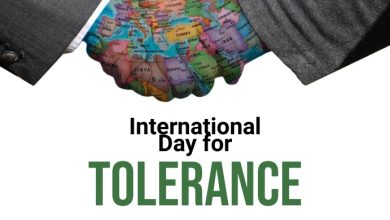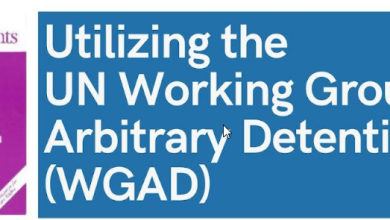Environmental warfare in conflict zones: The case of Kashmir’s fragile ecosystem
Mehr un Nisa
 In conflict zones like Indian illegally occupied Jammu & Kashmir, environmental protection is not just an ecological concern; it is a pivotal element of human security and regional stability. IIOJK’s rich and biodiverse environment is integral to the larger Himalayan ecosystem, one of the most significant ecological zones globally, often referred to as the “water tower of Asia” or the “third pole.” This region sustains the lifelines of ten major river systems, serving nearly 1.3 billion people across South Asia. However, the Indian military presence in occupied Jammu and Kashmir has intensified resource depletion and environmental degradation in the valley. This militarization, coupled with decades of illegal timber smuggling and unchecked development, has accelerated deforestation, depleted water resources and devastated local wildlife populations.
In conflict zones like Indian illegally occupied Jammu & Kashmir, environmental protection is not just an ecological concern; it is a pivotal element of human security and regional stability. IIOJK’s rich and biodiverse environment is integral to the larger Himalayan ecosystem, one of the most significant ecological zones globally, often referred to as the “water tower of Asia” or the “third pole.” This region sustains the lifelines of ten major river systems, serving nearly 1.3 billion people across South Asia. However, the Indian military presence in occupied Jammu and Kashmir has intensified resource depletion and environmental degradation in the valley. This militarization, coupled with decades of illegal timber smuggling and unchecked development, has accelerated deforestation, depleted water resources and devastated local wildlife populations.
The extensive presence of military forces has had severe consequences for IIOJK’s natural environment. Illegal construction projects, the clearing of forested lands for military infrastructure and the widespread contamination of rivers have polluted vital water sources and disrupted the local ecosystem. In the last five decades alone, J&K has lost nearly 23% of its forest cover due to deforestation and exploitation, often by unauthorized timber operations. These practices not only diminish forest resilience but also jeopardize the already declining Himalayan glaciers, which have seen a 23% reduction in coverage due to climate change. This accelerated degradation is a grave violation of international environmental laws, such as the Geneva Conventions’ Additional Protocol I and the Convention on the Prohibition of Military or Any Other Hostile Use of Environmental Modification Techniques (ENMOD), both of which prohibit deliberate environmental damage in warfare.
The degradation of IIOJK’s environment is not merely an unintended consequence of conflict; it is a strategy that has been used to alter the social and ecological landscape of the region. According to the ICRC’s Customary International Humanitarian Law Study, Rule 45 clearly prohibits using environmental destruction as a method of warfare. However, evidence suggests that in IIOJK, natural resources are exploited as a tool of control, with severe repercussions for the local population and biodiversity. Indiscriminate shelling and infrastructure development have led to soil erosion, polluted water sources and the destruction of agricultural land, affecting food security and public health for the civilian population.
The disruption of natural ecosystems directly impacts local biodiversity. The Hangul deer, an Asiatic sub-species of the European red deer, which holds cultural significance in Jammu and Kashmir, has seen its population decline by 95% due to habitat loss and fragmentation. The International Union for Conservation of Nature (IUCN) classifies the Hangul as critically endangered, highlighting the species’ dire need for protection. The Kashmir stag’s plight shows the cascading effects of environmental destruction on both the natural heritage of the region and the socio-cultural identity of its people. Without robust environmental protections, the conflict in IIOJK will continue to result in the irreparable loss of Kashmir’s natural and cultural wealth.
The protection of the environment in conflict zones is enshrined in international humanitarian law (IHL), yet these principles are frequently undermined in IIOJK. The Additional Protocol I to the Geneva Conventions prohibits “widespread, long-term and severe” damage to the environment, emphasizing the necessity of preservation even amidst warfare. Additionally, under ENMOD, the use of environmental modification techniques as weapons is expressly forbidden, with the threefold criteria of “widespread, long-lasting, or severe” being alternative, not cumulative, requirements for the prohibition. However, IIOJK’s militarized environment remains vulnerable to both direct and indirect environmental harm, indicating a disregard for these legal standards.
As stipulated under Article 54(2) of Additional Protocol I and Article 14 of Additional Protocol II, objects essential to civilian survival, including agricultural lands, water resources and livestock, should be protected against attacks, destruction, or exploitation. The indiscriminate shelling of these vital resources in IIOJK not only violates the Geneva Conventions but also hinders efforts to build sustainable peace in the region. By undermining the ecological and resource base of the valley, these actions destabilize not only IIOJK but also the wider South Asian region, risking prolonged insecurity and displacement.
The International Day for Preventing the Exploitation of the Environment in War and Armed Conflict calls for a coordinated international response to protect conflict-affected ecosystems and uphold environmental rights in conflict zones like IIOJK. The United Nations Security Council (UNSC) has increasingly recognized that environmental protection is essential for maintaining international peace and security.
In IIOJK’s case, addressing environmental destruction requires not only humanitarian intervention but also a commitment to conflict resolution, as outlined in the principles of sustainable peacebuilding. To safeguard Kashmir’s environmental future, it is imperative for international actors to enforce compliance with international environmental law and IHL.
The international community must encourage India to respect its obligations under these frameworks, ensuring that environmental degradation is neither a consequence nor a strategy of conflict. The conservation of the Himalayan region is not just a regional concern; it is a global responsibility. International mechanisms, including the United Nations Environment Programme (UNEP) and the International Court of Justice (ICJ), should be mobilized to hold parties accountable for environmental damage in conflict zones and to develop robust frameworks for ecosystem preservation in disputed territories.
The author is Director of Research and Human Rights Desk at Kashmir Institute of International Relations (KIIR). She can be contacted at: mehr_dua@yahoo.com








